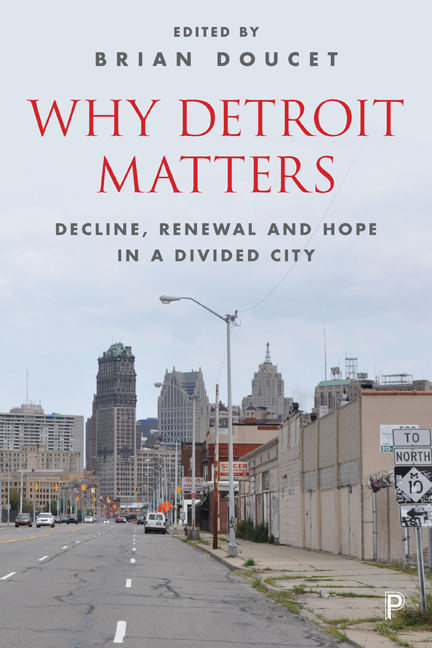Book contents
- Frontmatter
- Contents
- List of contributors
- List of figures and tables
- Acknowledgments
- one Introduction: why Detroit matters
- Section One Lessons from Detroit
- Intermezzo I You may not know my Detroit
- Section Two Practices from Detroit
- Intermezzo II My Detroit
- Section Three Conversations from Detroit
- References
- Index
one - Introduction: why Detroit matters
Published online by Cambridge University Press: 05 April 2022
- Frontmatter
- Contents
- List of contributors
- List of figures and tables
- Acknowledgments
- one Introduction: why Detroit matters
- Section One Lessons from Detroit
- Intermezzo I You may not know my Detroit
- Section Two Practices from Detroit
- Intermezzo II My Detroit
- Section Three Conversations from Detroit
- References
- Index
Summary
Visiting Detroit
For several years, I have taken urban geography students from the Netherlands to Detroit. I never have to work very hard to market the trip. “Detroit”; the very word evokes powerful images and strong meanings, especially to European urbanists. My students come to Detroit wanting to see the ruins; I take them there because I want to challenge them to look beyond them.
The trip is part of a wider course on North American cities. We start in Toronto, my hometown. When the scheduling permits, I like to cross into the US from Canada at Sarnia/Port Huron, 100 km north of Detroit. We drive south along I-94 through the quiet Michigan countryside. However, the rural nature of the interstate does not last long and the freeway is soon bordered by subdivisions, trailer parks, and medium-sized industrial warehouses. Exits become busier and contain more fast-food restaurants, strip malls, and gas stations. When we pass 24 Mile Road, we enter an unbroken zone of development that continues all the way to Downtown Detroit (see Figures 1.1, 1.2, and 1.3).
Most people would continue along I-94 straight into Detroit. However, we head over to Gratiot Avenue in the northeast suburb of Roseville. Continuing our journey south on Gratiot, we drive through ordinary American suburbia (see Figure 1.4). To Americans, this landscape is commonplace and apart from local businesses such as Coney Island restaurants and the unique “Michigan Left” road system, such a drive could be anywhere in America. To my Dutch students, however, even this mundane landscape is foreign and intriguing.
After a short drive along Gratiot, we cross the famous 8 Mile Road; the first cameras appear trying to grab a quick photo of the street sign. As we enter into the City of Detroit, the students watch as virtually everything they saw in the suburbs literally crumbles before their eyes. The commercial businesses lining both sides of Gratiot disappear into abandonment, burned out buildings, and vacant lots. Down the side streets, many of the houses are abandoned or victims of arson attacks. Vacant lots proliferate. Trash litters the streets. Weeds sprout out from the sidewalks. Even most of the cars have gone elsewhere and traffic on this broad thoroughfare is minimal.
- Type
- Chapter
- Information
- Why Detroit MattersDecline, Renewal and Hope in a Divided City, pp. 1 - 30Publisher: Bristol University PressPrint publication year: 2017



